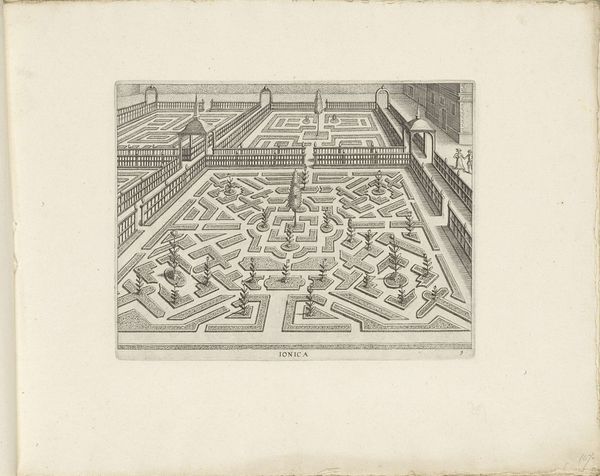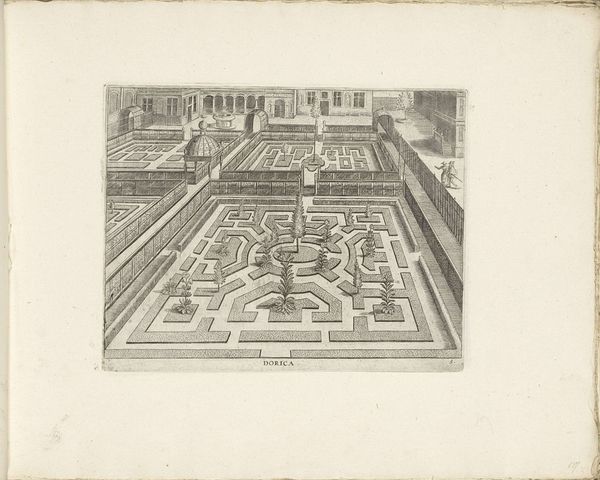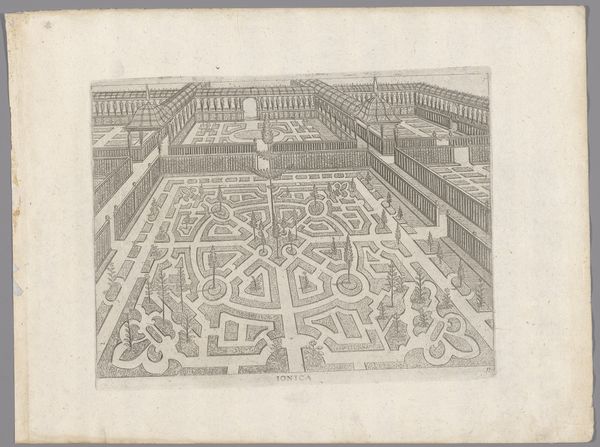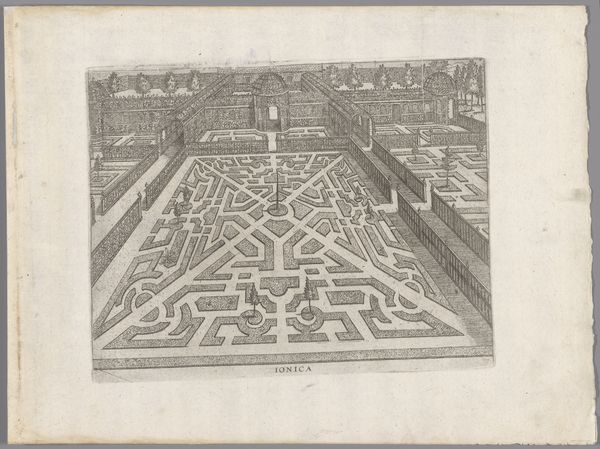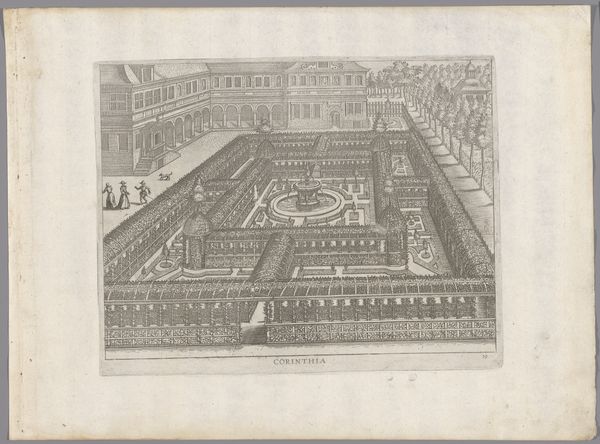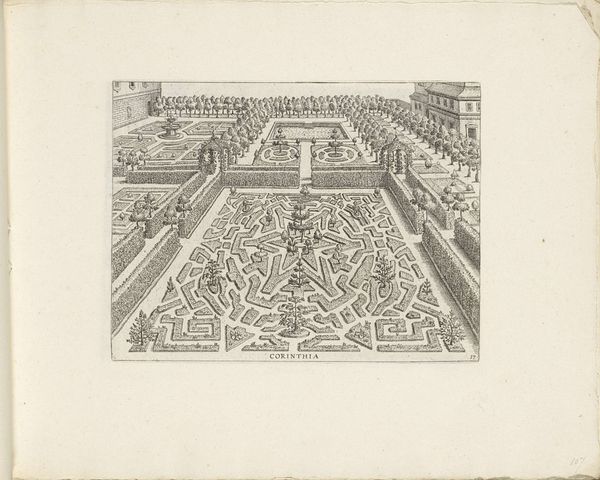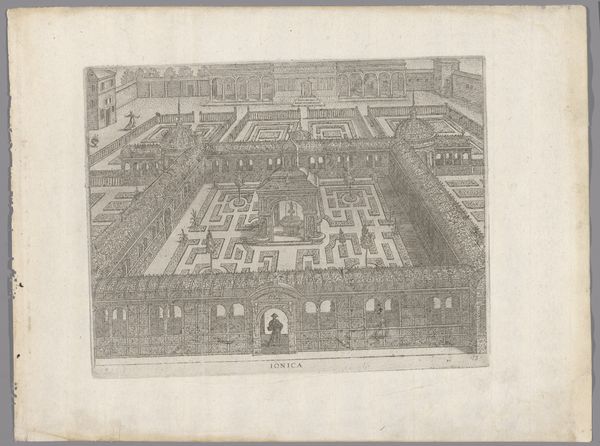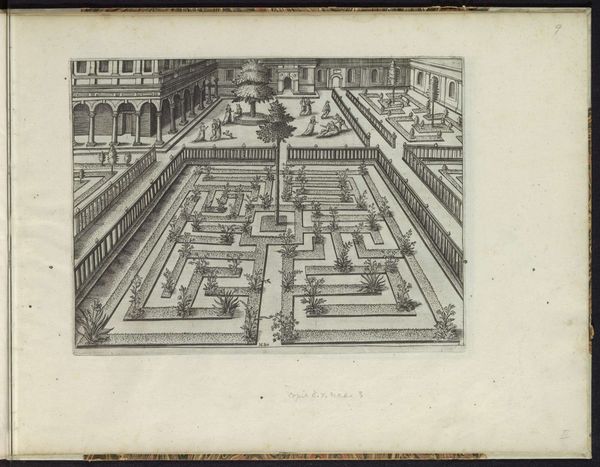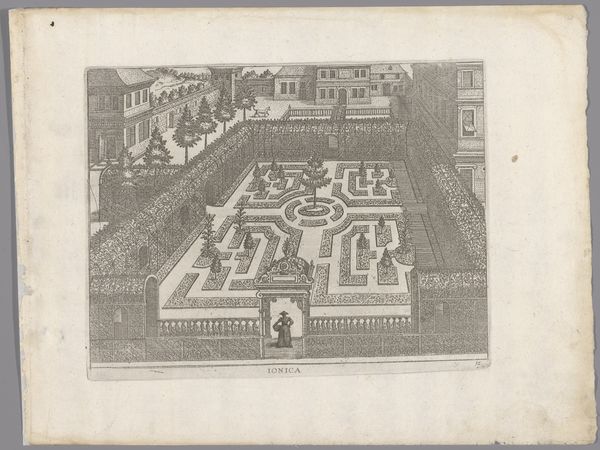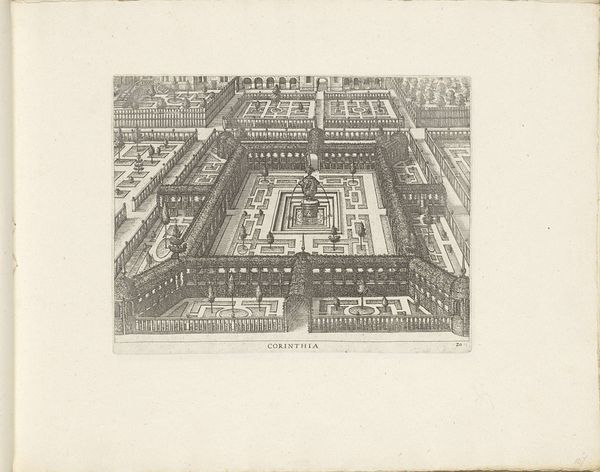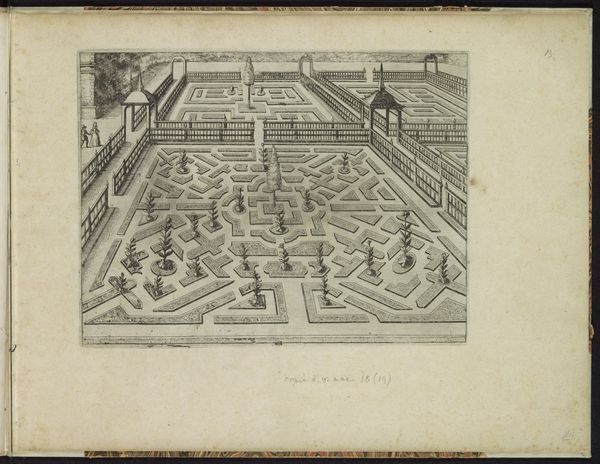
Tuin met centrale parterre bestaande uit zes compartimenten c. 1583 - 1640
0:00
0:00
print, etching, engraving
#
garden
#
aged paper
#
toned paper
#
light pencil work
# print
#
etching
#
pencil sketch
#
old engraving style
#
sketch book
#
landscape
#
personal sketchbook
#
pen-ink sketch
#
pen work
#
sketchbook drawing
#
engraving
Dimensions: height 191 mm, width 246 mm
Copyright: Rijks Museum: Open Domain
This anonymous engraving depicts a garden with a central parterre, divided into six compartments. The dominant symbol here is the garden itself, a motif that stretches back to antiquity, representing paradise, order, and control over nature. We see echoes of this symbolism in the hanging gardens of Babylon, or even further back in the walled gardens of ancient Egypt. The enclosed garden, or ‘hortus conclusus,’ later became a powerful symbol in Christian art, representing the Virgin Mary’s purity and spiritual refuge. Over time the garden evolves, shifting from a sacred space to a secular symbol of power and earthly delight. The formal layout and carefully manicured plants speak to a desire to impose order on the natural world, a recurring theme in human psychology and artistic expression. This reflects mankind's deep desire to shape our environment. Consider how this vision of order resonates within our collective memory. The garden, therefore, becomes a stage upon which we project our deepest desires and fears.
Comments
No comments
Be the first to comment and join the conversation on the ultimate creative platform.
